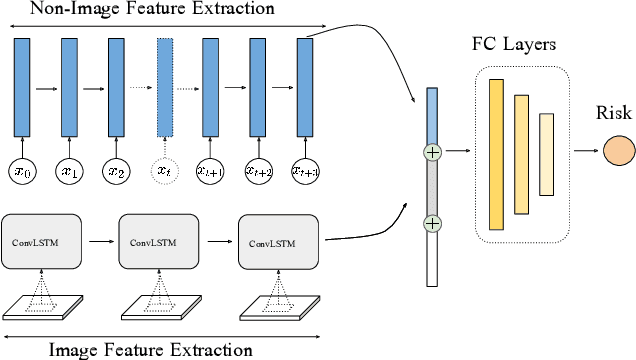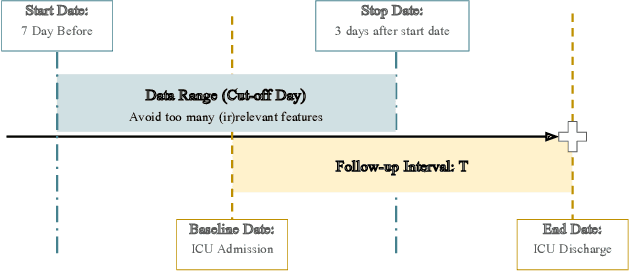Deep survival analysis with longitudinal X-rays for COVID-19
Paper and Code
Aug 22, 2021



Time-to-event analysis is an important statistical tool for allocating clinical resources such as ICU beds. However, classical techniques like the Cox model cannot directly incorporate images due to their high dimensionality. We propose a deep learning approach that naturally incorporates multiple, time-dependent imaging studies as well as non-imaging data into time-to-event analysis. Our techniques are benchmarked on a clinical dataset of 1,894 COVID-19 patients, and show that image sequences significantly improve predictions. For example, classical time-to-event methods produce a concordance error of around 30-40% for predicting hospital admission, while our error is 25% without images and 20% with multiple X-rays included. Ablation studies suggest that our models are not learning spurious features such as scanner artifacts. While our focus and evaluation is on COVID-19, the methods we develop are broadly applicable.
 Add to Chrome
Add to Chrome Add to Firefox
Add to Firefox Add to Edge
Add to Edge